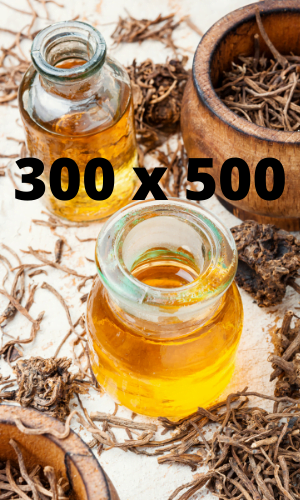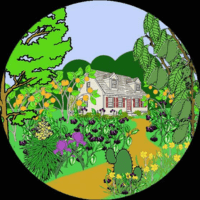Green Tea Plant in your yard? YES, grow Green Tea, Camellia sinensis!
Green Tea plants are easy to grow, and have REMARKABLE benefits. However, I’ve NOT met one person who knows that the Green Tea plant thrives in zone 7. They are free of pests and diseases, and we do NOT need to water them (growing in partial shade)! It’s an evergreen. She has lush leaves all winter long. Also, beautiful white flowers emerge on October-November.
Camellia sinensis is the ONE botanical name but you’ll find different common names. We grow these two types of Green Tea Plants.
Four types of tea are produced by Green Tea plant: Black, Green, Oolong, and White teas. All four types of teas are described below.
How to Grow the Green Tea plant is simple because the Camellia sinensis is an easy-to-grow plant! Grow it in full sun (cool regions) or partial shade (hot regions). They thrive in rich, well-drained soil. We have no pests or disease, and our one-to-three year old plants are not watered. Learn How to Grow the Green Tea plant!

Green Plants and Teas, and How to Grow it!
What’s on this webpage:
- Green Tea plants we grow organically
- Korean Tea Seedling
- Sochi Tea Tree
- Types of Tea from Camellia sinensis
- Green Tea
- Black Tea
- Oolong
- White Tea
- How to Grow the Green Tea plant
Green Tea plants we grow organically
Camellia sinensis is the ONE botanical name but you’ll find different common names. We grow these two.
This page is being written now in
Spring 2024
1. Korean Tea Seedling Plant
Also called, Wood Betony, Common Hedgenettle
Betony has strong large dark green leaves. The leaves produce an aromatic oil. Showy purple flowers grow off tall stalks. It’s drought tolerant once established (by it’s second year for sure). Very LITTLE spreading. I wish it spread better! A few new plants have started around the base of the parent plant. Betonica officinalis and Stachys officianalis are alternate species-name for Betony.
Where to grow Betony
Grow it in a container, or use Betony for a naturalized area, or along walkways. Betony is an excellent choice for a Herb Garden, Pollinator Garden, and a Cottage or Rock Garden.
Makes virtually NO mess. Trim the flower stalks after blooming. That’s it!
Edible and Medicinal Uses
Betony is used for tea and medicinally. It’s used fresh or dried. The whole plant is collected when in flower in the summer and can be dried for later use (PFAF).
As a tea, the leaves and flowers are refreshing and aromatic. Medicinally, it was once used as a medicinal plant in the treatment of a WIDE range of disorders. Too many to list. But now, it more often forms part of a mixture of herbs (PFAF).
Betony has not been well studied by Western Medicine, despite a history as a “commonly used…medicinal plant” (PFAF).
Betony Details
Zones: 4-9
Exposure: Full to Part Sun
Mature Size: 36″H x 18″W
Bloom: Purple, Summer-Fall

2. Sochi Tea Tree Plant
Also called, Catmint, Catnip and Catswort
Lemon Catnip will grow into a sizable plant. MANY pollinators cover this plant when it blooms in late summer. It self-seeds well. The many new plants are all within 3 feet of the parent plant. This plant is quickly drought tolerant because it establishes quickly.
Catnip has insecticidal properties.
Essential oil demonstrates repellency against blood-feeding pests such as mosquitoes and ticks (NIH PubMed). Also, the American Chemical Society found Catnip to be 10x more effective at repelling mosquitoes than the commercial chemical DEET (Growers Exchange).
Where to grow Lemon Catnip
It grows well in a container. Also, grow Lemon Catnip in an Herb Garden, Pollinator Garden or Cottage Garden.
Prune Lemon Catnip blooms as they age. That will promote continued blooming. ALERT: Catnip Nepeta cataria self-seeds. We don’t see self-seeding plants far away from the parent plant. However, we have many young plants growing around the parent plant.
Edible and Medicinal Uses
Catnip is used for tea, in salads and medicinally. It’s used fresh or dried. Flowers are collected when in flower. It can be dried for later use (PFAF).
As a tea, it should be infused in a closed container to preserve the essential oils, and not boil it.
xxxxxxxxxxxxxxxxxxxxxxxxxxxxxxxxxxxxxxx
the leaves and flowers are refreshing and aromatic. Medicinally, it was once used as a medicinal plant in the treatment of a WIDE range of disorders. Too many to list. But now, it more often forms part of a mixture of herbs (PFAF).
Many cats love catnip, but it can cause vomiting and diarrhea. It makes some cats sedated and others stimulated (NC Extension).
Lemon Catnip Details
Zones: 3-9
Exposure: Full to Part Sun
Mature Size: 48″H x 36″W
Bloom: White, Mid Late Summer

Types of Tea from Camellia sinensis Green Tea Plant
Four types of teas are produced by Green Tea plant, Camellia sinensis.
- Black Tea
- Green Tea
- Oolong
- White Tea
HEPPY™ cannot take any responsibility for any adverse effects from the use of plants. Always seek advice from a professional before using a plant for food or medicinally. This information is intended for educational purposes only and should not be considered as a recommendation or an endorsement of any particular medical or health treatment.
How to Grow the Green Tea plant
xxxxxxxxxxxxxxxxxxxxxxxxxxxxx
________________________________________
YouTube channel (please subscribe)
